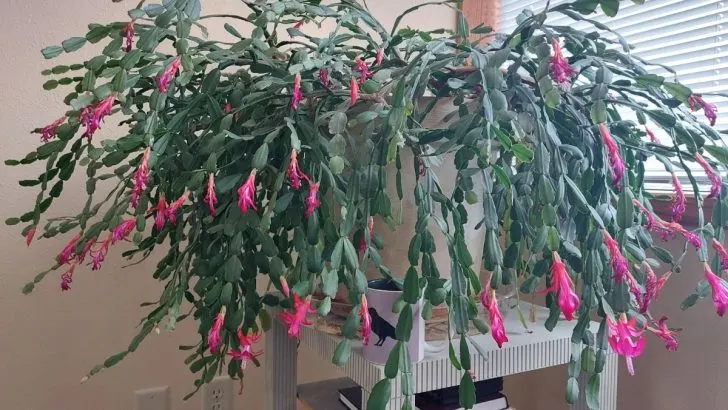You won’t believe how one small change can turn your Christmas cactus into a flowering masterpiece.
Have you ever gazed at your Christmas cactus, wondering why it’s all leaves and no flowers? You’re not alone. Many plant enthusiasts share the same plight: a green, leafy cactus that stubbornly resists blooming when the holidays roll around.
What if I told you there’s a straightforward technique that not only coaxes your Christmas cactus to bloom but transforms it into a floral spectacle—year after year? Stick with me, and I’ll share the secret that will make your cactus the talk of every holiday gathering.
The Secret to Getting Your Christmas Cactus to Bloom

First things first, let’s tackle the fundamental question: How do you persuade this festive plant to bloom in the first place?
Christmas cactuses, along with their cousins—the Thanksgiving and Easter cactuses—are what’s known as short-day plants.
This means they require longer nights and cooler temperatures to kickstart the dormancy that leads to bud development. It might sound complicated, but it’s a natural process that you can easily mimic at home.
Mimicking Nature at Home: The Key to Blooms
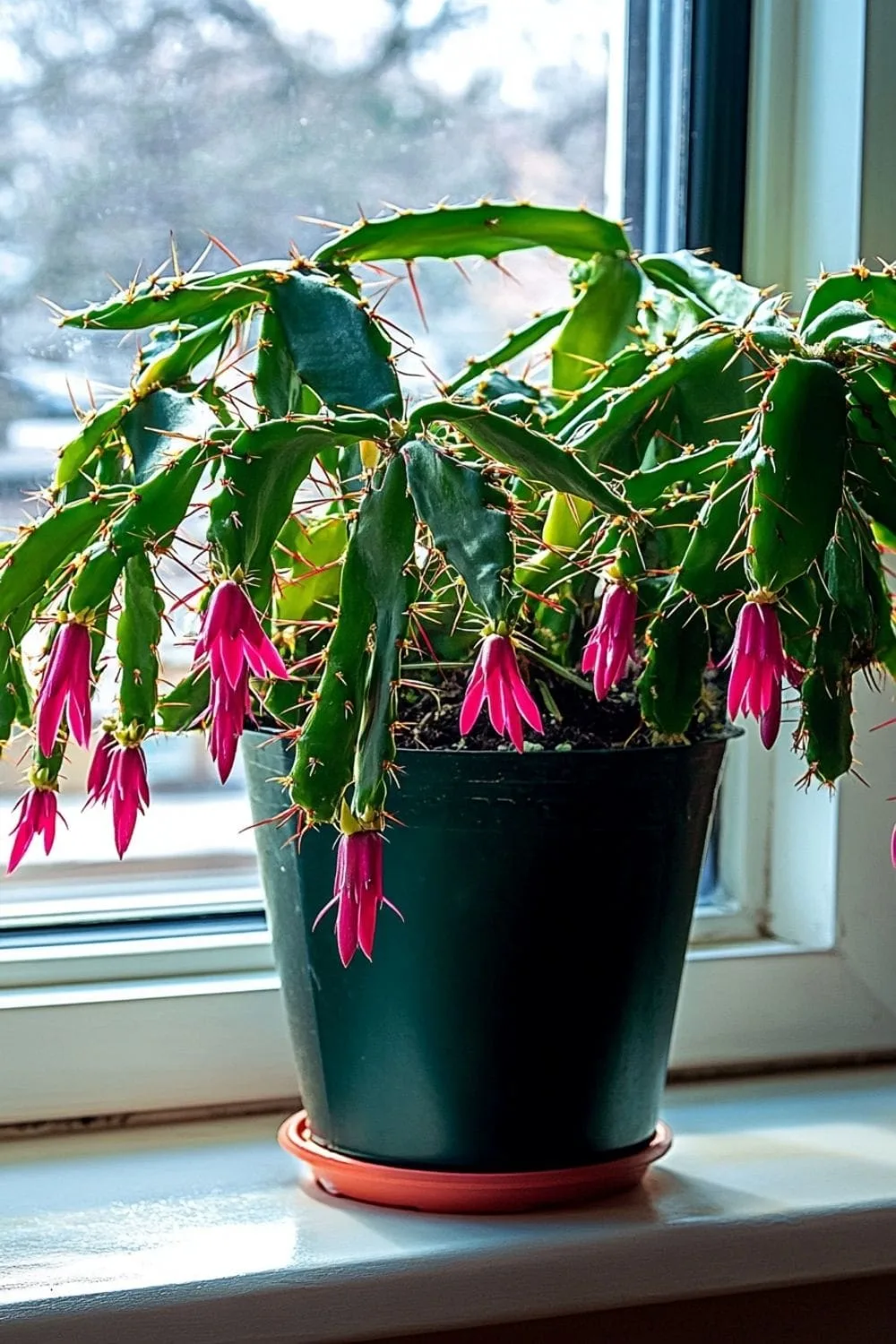
Starting about six weeks before you want your cactus to bloom (typically around mid-October for a Christmas cactus), it’s crucial to simulate the shorter days and longer nights of its natural environment. Here’s how:
• Darkness: Ensure your cactus gets 14 hours of uninterrupted darkness each day. This can be as simple as placing it in a dark room or covering it with a black cloth or cardboard box during the evening.
• Cool Temperatures: Keep the plant in a cooler location, ideally between 50-55°F (10-13°C). Consider spots like an unheated guest room, basement, or enclosed porch.
• Watering: Reduce watering during this period. Allow the top two inches of soil to dry out before giving it a modest drink. Overwatering can hinder bud formation.
• No Fertilizing: Hold off on feeding your cactus during this time. Fertilizers can promote leafy growth at the expense of blooms.
After approximately six weeks of this treatment, you should start to see tiny buds forming at the tips of the leaves. Congratulations—you’re on your way to a blooming Christmas cactus!
The Game-Changer: Summering Your Christmas Cactus Outdoors
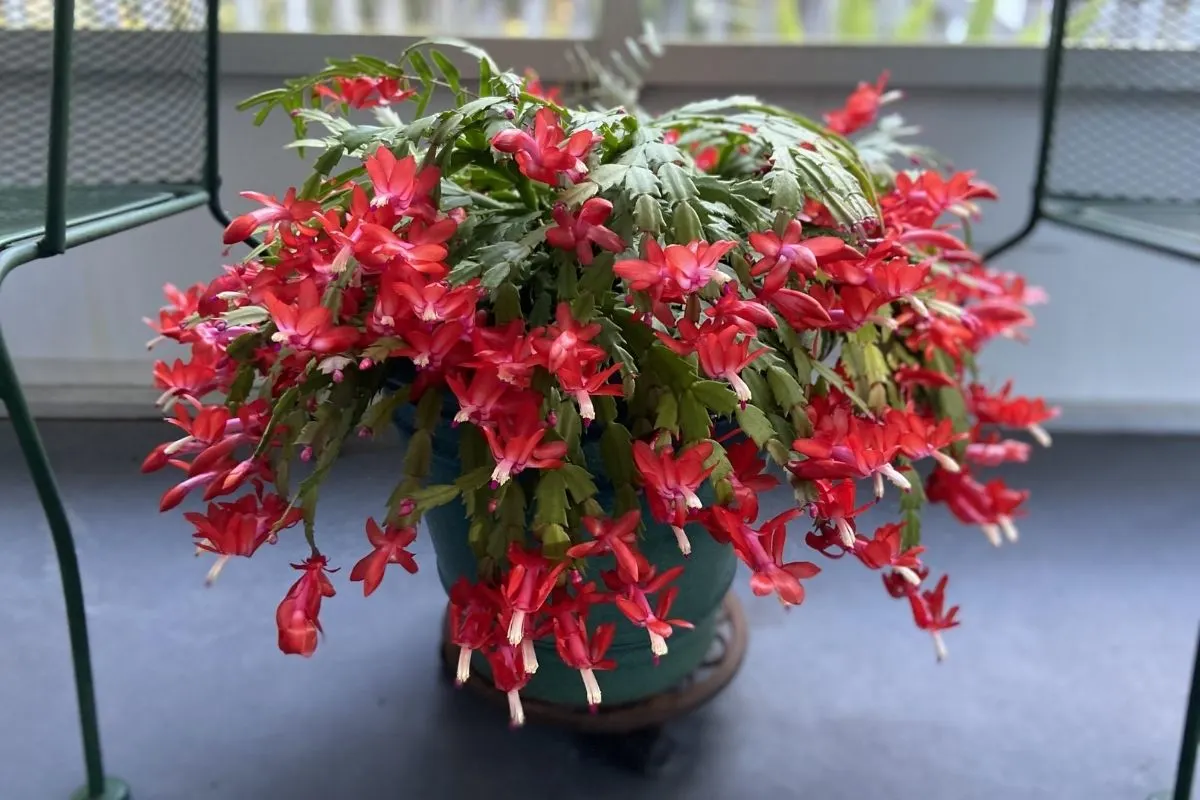
Now, here’s the trick that will take your cactus from a modest bloomer to a flowering powerhouse: Move your Christmas cactus outside for the summer.
But wait, before you rush your plant outdoors, there are important considerations to ensure this transition is a success.
Your Christmas cactus is sensitive to temperature changes. Only move it outside when nighttime temperatures consistently stay above 55°F (13°C). Sudden cold snaps can stress or even damage the plant.
These tropical beauties crave lots of bright, indirect light but will scorch in direct sunlight. Here’s how to choose the ideal location:
• Sheltered Light: Place your cactus in a spot where it receives gentle morning sun and is shielded from the harsh afternoon rays. An east-facing porch or beneath the canopy of a leafy tree works wonders.
• Avoid Direct Sunlight: Direct midday and afternoon sun can cause the leaves to turn red or purple—a sign of stress from sunburn.
• Protection from the Elements: Ensure the plant is safe from strong winds and heavy summer storms that could damage its delicate segments.
Caring for Your Outdoor Cactus
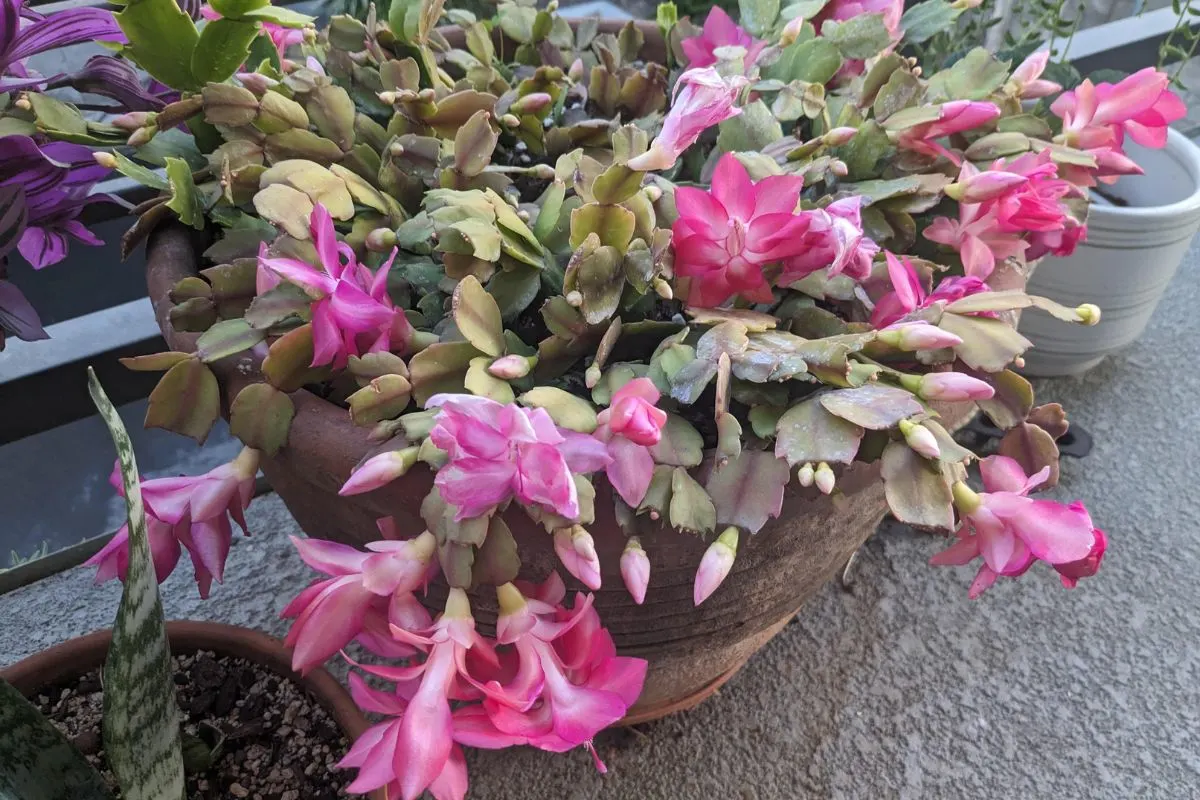
While your cactus enjoys its summer vacation outdoors, it’s important to keep up with its care:
• Watering: The warmer weather means the soil will dry out faster. Check your cactus regularly and water when the top inch feels dry to the touch.
• Feeding: During its active growth phase in summer, feed your cactus with a balanced liquid fertilizer every two to four weeks. Switch to a high-phosphorus fertilizer in late summer to promote bud formation.
• Monitoring for Pests: Being outdoors exposes your plant to insects. Keep an eye out for common pests like mealybugs or aphids, and treat promptly if needed.
Bringing Your Cactus Back Indoors
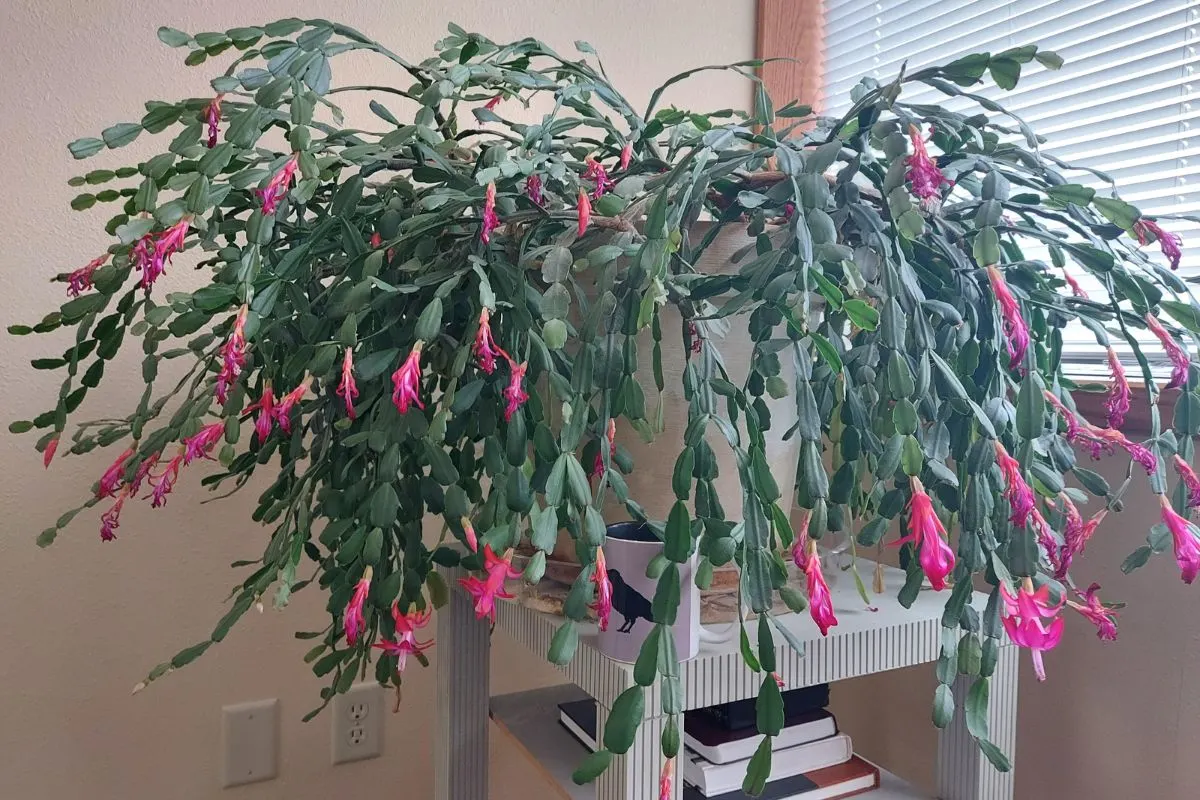
As fall approaches and nighttime temperatures dip below 55°F (13°C), it’s time to bring your cactus back inside. This transition coincides perfectly with the beginning of its pre-bloom dormancy period.
Place it in a cool, dark area of your home—just like before—and resume the darkness and cool temperature regimen to encourage bud development.
Why This Outdoor Trick Works Wonders
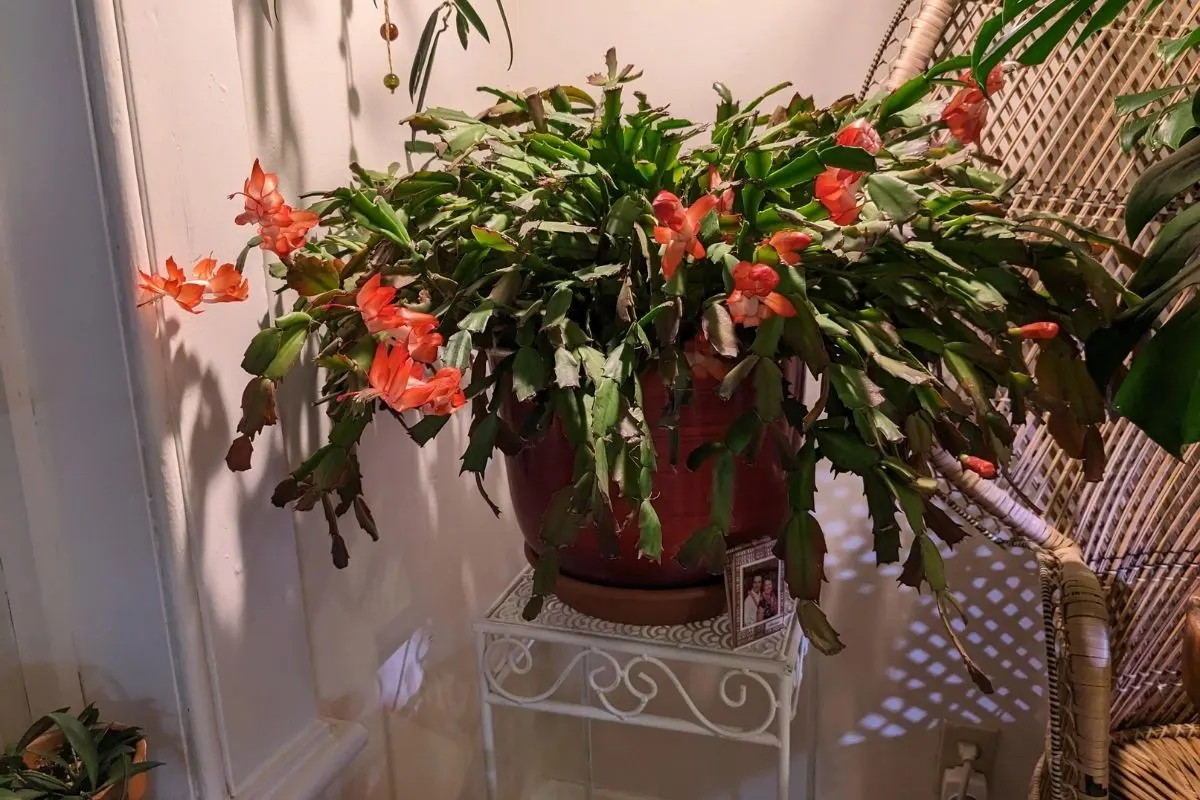
You might be wondering, Why does spending the summer outside make such a difference?
The answer lies in the abundance of natural light. Even the brightest spot in your home can’t compete with the light exposure your cactus receives outdoors. This surge in sunlight allows the plant to build up energy reserves, promoting vigorous growth and an explosion of blooms during the holiday season.
Think of your Christmas cactus as a solar-powered dynamo. The more light it absorbs during the summer, the more brilliant and plentiful its flowers will be come winter.

